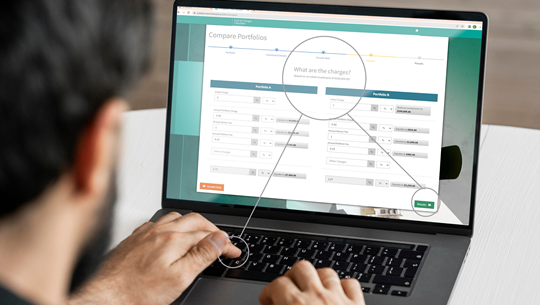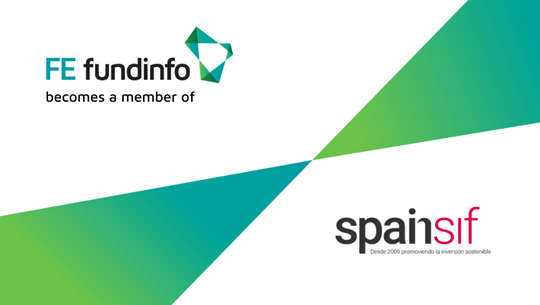LONDON, TUESDAY 29 MAY 2018: Advisers may be inadvertently exposed to business risk and regulatory action by not verifying that their risk mapping tools are fit for purpose and connect logically together, FE’s annual report into financial advice in the UK, has found.
The 2018 report, ‘Adviser business models – what lies beneath?’, analyses responses from over 130 UK advisers to highlight best practice and areas where advisers could make improvements.
Positively, 91% of advisers are using an ATRQ at the outset of discussions with clients about their risk appetite, up from 76% in the 2016 study. However, only 25% are using a third-party risk mapping tool designed to ensure the risk in portfolios matches the ATRQ assessment. This may be down to the fact that half of advisers (50%) think third-party risk mapping tools have limitations, describing them as ‘simplistic’ and ‘too generic’.
Of those using risk mapping tools, over half (52%) have not reviewed the underlying mapping methodology, despite suggestions from regulatory experts that this is best practice. Interviews with advisers carried out by FE also showed that advisers are often manually mapping ATRQ scores to investment solutions and many are taking the approach of matching on asset allocation alone.
Despite continued regulatory scrutiny and suggestions from experts, more than half (54%) of advisers have not adapted their investment process over the last two years.
Rob Gleeson, head of research at FE, comments: “Not enough advisers are being inquisitive enough when it comes to the components that make up their investment proposition. Those choosing not to use third-party risk mapping tools need to make sure they have the competence to lift the bonnet on their investment risk tools and ensure they seamlessly match up.
“Where advisers are using third-party risk mapping tools, many are assuming both the risk profile outputs of ATRQs and of portfolios speak the same language, and that all they need to do is simply connect the two together. It does not necessarily follow that an investment portfolio or option that is described as ‘medium risk’ will be suitable to a client assessed as ‘medium risk’, yet many advisers appear to be taking this to be the case.”
The research also shows that the practice of blending multi asset/multi manager funds or pre-constructed model portfolios, with the assumption that doing so reduces risk, is not only widespread but on the increase. A majority of advisers (73%) are blending or combining their clients’ assets in a single portfolio across more than one model portfolio or multi asset fund, up from a figure of 71% in the 2017 survey and 64% in 2016. The desire to increase diversification was given as the primary reason for doing so (59%).
Gleeson commented: “It is concerning that the proportion of advisers taking this approach is growing given the potential for incurring increased charges for clients as well as the possibility of complex and unexpected risk patterns emerging. That said, whilst blending these pre-packaged solutions could have potentially unintended consequences, clients may need to invest in different strategies to meet long and short-term needs in drawdown, for example.”
Furthermore, as well as bundling multi-component funds together, the research also found evidence that many advisers are also bundling people together – merging couples into a single risk-profiling assessment, or merging appetite for risk for different savings goals when different approaches for different buckets of assets might be more suitable.
Additional findings:
- 90% of firms are reviewing all aspects of their investment proposition at least annually, with 39% doing so twice a year.
- Just 53% of advisers have reviewed their ATRQ in the last 12 months.
- Two-thirds (67%) of advisers are ignoring expert recommendations that firms should take an aggregated firm-level sample of ATRQs from a minimum of 30 files to see whether significant trends were shown to exist within firms.
- There is a worrying decline in advisers’ usage of risk targets when building a portfolio, with 44% saying they never do, compared to 31% not using risk targets in the 2016 survey.
- The proportion of advisers not checking whether their risk-targeted funds are hitting their target is also on the increase, with more than two-thirds of advisers (67%) not knowing the percentage of risk targeted funds in their portfolios that came within their targets last year. This is up from 57% who did not know in FE’s 2016 survey.
- 31% of advisers say they intend over the next 12 months to put nearly all (90%) of their clients’ investments in a single investment proposition, down from 40% two years ago, with in-house model portfolios responsible for half this figure.
Gleeson said: “This report shows some positive signs of improvement in the robustness of adviser investment propositions, although it also highlights some concerning trends away from best practice. Advisers need to adopt a more critical approach to the tools and products that are components of their investment processes, and be more rigorous and methodical about challenging and reviewing their own centralised investment proposition. Only by looking under the bonnet of the tools they use can advisers future proof their businesses against the very real risks that can lie hidden below the surface.”
[1] A 2017 paper written by former FCA technical specialist Rory Percival, An Ex-regulator’s Guide to Risk Profiling Tools
For a copy of the full report, please email [email protected]
-ENDS-
NOTES TO EDITORS
About FE
FE is a leading provider of fund data, software and performance analytics to the financial services industry. FE’s products and services are designed to interpret and analyse data, helping financial advisers and investors stay well informed and ultimately make sound investment decisions. FE also provides tools and software for fund managers and other financial services firms, including products to assist with fund reporting and analysis as well as fund marketing and presentation materials. FE has offices in the UK, Europe and across Asia Pacific. Its clients include life and pension providers, asset managers, financial advisers and networks, wrap platforms, fund supermarkets, software houses, and financial portals.


